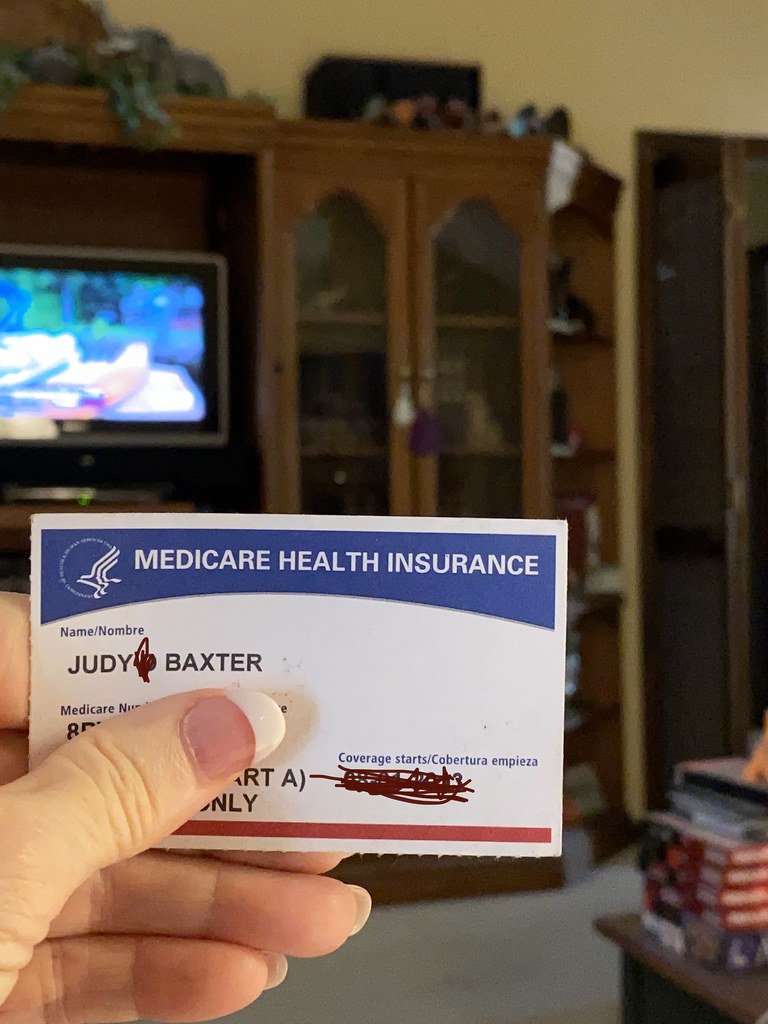
Medicare, the cornerstone of healthcare coverage for millions of Americans aged 65 or older and certain younger individuals with disabilities, is constantly evolving to meet the changing needs of its beneficiaries. As we approach 2025, it’s vital to stay informed about the latest updates to ensure you can make the most informed decisions about your health and financial well-being. These changes, often driven by legislative efforts like the Inflation Reduction Act of 2022 (IRA), aim to enhance affordability, especially for prescription drugs, and refine essential benefits across various parts of the program.
Understanding what’s new for 2025 can help you navigate your coverage with greater confidence, potentially leading to fewer disruptions in care and lower costs. The Centers for Medicare & Medicaid Services (CMS) released these updated figures on November 8, 2024, providing a clear picture of what beneficiaries can expect. From adjustments in premiums and deductibles to significant overhauls in prescription drug coverage, these updates will impact a wide array of services and costs.
Let’s delve into some of the most important updates concerning Medicare Parts A, B, and D, starting with the core financial adjustments and a major new protection for prescription drug costs. These details are crucial for anyone relying on Medicare, offering practical insights to help you plan effectively for the year ahead.
1. **Standard Medicare Part B Premium Increase**The standard monthly premium for Medicare Part B enrollees will see an adjustment in 2025, rising to $185.00. This represents an increase of $10.30 from the 2024 rate of $174.70. This change is a regular occurrence, as Part B premiums are determined annually based on provisions of the Social Security Act.
This increase in the 2025 Part B standard premium is mainly attributed to projected price changes and assumed utilization increases that are consistent with historical experience. For most beneficiaries, particularly those whose Part B premiums are deducted from their Social Security checks, the annual Cost-of-Living Adjustment (COLA) is generally expected to more than offset this increase, meaning they may still see a net rise in their Social Security benefits.
Medicare Part B is designed to cover a broad range of outpatient medical services, including physicians’ services, outpatient hospital services, certain home health services, durable medical equipment, and other specific medical and health services not covered by Medicare Part A. Understanding this premium adjustment is a fundamental step in budgeting for your healthcare costs in the coming year, especially as it forms the baseline for what most people will pay.
Read more about: Unlock Peace of Mind: Simple Secrets to Getting the Best Deal on Travel Insurance for Seniors

2. **Medicare Part B Annual Deductible Increase**In addition to the premium adjustment, the annual deductible for all Medicare Part B beneficiaries is also increasing for 2025. This deductible will be $257, which is an increase of $17 from the 2024 annual deductible of $240. The deductible is the amount you must pay out-of-pocket for covered Part B services before Medicare begins to pay its share.
This rise in the deductible, similar to the premium increase, is influenced by projected price changes and assumed utilization increases, reflecting the broader trends in healthcare costs. Once you meet this deductible, Medicare will typically cover 80% of the Medicare-approved amount for most Part B services, and you will be responsible for the remaining 20% coinsurance.
For beneficiaries, this means that the initial out-of-pocket expense for Part B covered services will be slightly higher before their insurance coverage fully kicks in. It’s important to factor this new deductible into your financial planning, particularly if you anticipate needing various outpatient services, doctor visits, or durable medical equipment throughout the year.
Read more about: Unlock Peace of Mind: Simple Secrets to Getting the Best Deal on Travel Insurance for Seniors
3. **Medicare Part B Income-Related Monthly Adjustment Amounts (IRMAA) Updates**Since 2007, a beneficiary’s Part B monthly premium has been tied to their income, affecting roughly 8% of people with Medicare Part B. For 2025, Medicare has updated the income thresholds for these Income-Related Monthly Adjustment Amounts (IRMAA), meaning certain high-income beneficiaries will pay a higher total monthly premium.
For example, individuals filing individual tax returns with a modified adjusted gross income greater than $106,000 and less than or equal to $133,000, or those filing joint tax returns with modified adjusted gross income greater than $212,000 and less than or equal to $266,000, will pay a total monthly premium of $259.00. This includes an income-related adjustment of $74.00 on top of the standard premium.
At the highest income bracket, individuals with modified adjusted gross income greater than or equal to $500,000 (individual filers) or greater than or equal to $750,000 (joint filers) will face a total monthly premium of $628.90, which includes a $443.90 income-related monthly adjustment. There are also specific adjustments for those who are married but file separately. These adjustments underscore the importance of understanding how your income impacts your Medicare costs.
Read more about: Essential Medicare Part B Premiums: A 2025 Comprehensive Guide for Savvy Seniors
4. **Standard Immunosuppressive Drug Premium for Part B**Beginning in 2023, a specialized provision was introduced for individuals whose full Medicare coverage ended 36 months after a kidney transplant. If these individuals do not have certain other types of insurance coverage, they can elect to continue Part B coverage specifically for immunosuppressive drugs by paying a distinct premium.
For 2025, the standard premium for this immunosuppressive drug coverage only under Part B is set at $110.40 per month. This premium is crucial for those post-transplant patients who require ongoing immunosuppressive medication to prevent organ rejection but no longer qualify for full Part B coverage based on other criteria.
Like other Part B premiums, this amount can also be subject to income-related monthly adjustments for high-income beneficiaries. For example, an individual filing separately and earning greater than $394,000 will pay a total monthly premium of $552.10, including a $441.70 IRMAA. This specific premium ensures a vital lifeline for a vulnerable group of patients, maintaining access to critical post-transplant care.
Read more about: Essential Medicare Part B Premiums: A 2025 Comprehensive Guide for Savvy Seniors

5. **Medicare Part A Inpatient Hospital Deductible and Coinsurance Changes**Medicare Part A covers inpatient hospital stays, skilled nursing facilities, hospice care, inpatient rehabilitation, and some home health services. While about 99% of Medicare beneficiaries do not pay a Part A premium due to having at least 40 quarters of Medicare-covered employment, changes to the deductible and coinsurance amounts are still highly relevant.
For 2025, the Medicare Part A inpatient hospital deductible that beneficiaries pay if admitted to the hospital will be $1,676 per benefit period. This marks an increase of $44 from the 2024 deductible of $1,632. This deductible covers a beneficiary’s share of costs for the first 60 days of Medicare-covered inpatient hospital care in a benefit period.
Beyond the initial 60 days, coinsurance amounts also increase. In 2025, beneficiaries must pay $419 per day for the 61st through 90th day of a hospitalization ($408 in 2024), and $838 per day for lifetime reserve days ($816 in 2024). For beneficiaries in skilled nursing facilities, the daily coinsurance for days 21 through 100 of extended care services will be $209.50 in 2025, up from $204.00 in 2024. These changes mean higher out-of-pocket costs for longer hospital or skilled nursing facility stays.
Read more about: Navigating Medicare: 12 Essential Gaps in Coverage You Need to Understand

6. **Medicare Part A Premiums for Non-Qualifiers**While most Medicare beneficiaries enjoy premium-free Part A, a segment of the population does pay a monthly premium. This applies to enrollees aged 65 and older who have fewer than 40 quarters of coverage, as well as certain persons with disabilities who choose to voluntarily enroll in Medicare Part A.
For those who had at least 30 quarters of coverage, or were married to someone with at least 30 quarters of coverage, they may buy into Part A at a reduced monthly premium rate. This reduced rate will be $285 in 2025, representing a $7 increase from 2024. This option provides a more affordable pathway to Part A coverage for individuals who meet certain work history criteria but not the full 40 quarters.
However, for certain uninsured aged individuals who have fewer than 30 quarters of coverage, and specific individuals with disabilities who have exhausted other entitlements, they will be required to pay the full premium. For 2025, this full premium will be $518 a month, which is a $13 increase from 2024. Understanding these different premium tiers is crucial for those who fall into these categories and need to budget for their Part A coverage.

7. **$2,000 Out-of-Pocket Spending Cap for Part D Prescriptions**One of the most impactful and widely anticipated changes for 2025, brought about by the Inflation Reduction Act of 2022, is the implementation of a $2,000 annual out-of-pocket spending cap for covered prescription drugs under Medicare Part D. This is a landmark change, marking the first time in the history of the Medicare program that people have a cap on how much they could have to pay out of pocket for their medications.
This $2,000-a-year limit applies to both stand-alone Medicare Part D policies and drug coverage included in Medicare Advantage plans. It encompasses deductibles, copayments, and coinsurance for covered drugs. Once a beneficiary reaches this cap, they will pay $0 for covered medications for the remainder of the calendar year, eliminating the previous 5% coinsurance in the catastrophic phase.
This significant reform is expected to provide substantial financial relief to millions of people with high prescription drug costs. It doesn’t, however, apply to premiums or to drugs that a plan doesn’t cover, nor does it apply to Part B drugs like injections received at a doctor’s office. The amount of this cap can also be adjusted in subsequent years if Part D costs continue to rise. This new cap offers much-needed predictability and protection against exorbitant drug expenses, encouraging beneficiaries to carefully review their plan options during open enrollment.
Read more about: Navigating Medicare: 12 Essential Gaps in Coverage You Need to Understand

8. **Elimination of the “Donut Hole” and Simplified Part D Structure**One of the most significant and welcome reforms within Medicare Part D for 2025 is the effective elimination of the notorious “donut hole,” or coverage gap. This change, part of a larger redesign of Part D plans introduced by the Inflation Reduction Act, dramatically simplifies the structure of prescription drug coverage, making it easier for beneficiaries to understand their costs and obtain their medications without unexpected expenses.
Previously, Part D plans featured four distinct coverage phases, which often led to confusion and substantial out-of-pocket costs during the coverage gap. These phases included a deductible period, an initial coverage phase, the coverage gap (or donut hole), and finally, a catastrophic phase. The complexities of different counting methodologies for reaching these phases added to the challenge for many seniors.
Beginning in 2025, the Part D benefit structure is streamlined into three, more transparent phases. First is the Deductible Period, where beneficiaries are responsible for 100% of their drug costs until their deductible is met. The maximum standard Part D deductible for 2025 is $590, though some plans may offer a lower or even no deductible, depending on their design.
Following the deductible, beneficiaries enter the Initial Coverage Phase. Here, costs are shared between the plan and the beneficiary, with the beneficiary typically paying a portion, often 25%, of their drug costs, along with a manufacturer discount for applicable drugs. This phase now directly transitions into the Catastrophic Coverage Phase, which is triggered once a beneficiary’s total out-of-pocket spending on covered drugs (including deductibles, copayments, and coinsurance) reaches the new $2,000 annual cap. After reaching this threshold, beneficiaries pay nothing for covered Part D drugs for the remainder of the year, offering unparalleled financial protection.
This simplified structure means an estimated 3.2 million people in Medicare drug plans will save money on their covered medications, according to a recent report from AARP. The move from complex, often unpredictable cost-sharing to a clear, capped model provides much-needed peace of mind and predictability for those relying on prescription drugs.

9. **Medicare Prescription Payment Plan (Optional)**Recognizing that even with a $2,000 out-of-pocket cap, high drug costs can still present a challenge, particularly early in the year, Medicare is introducing an optional Prescription Payment Plan for 2025. This innovative program allows beneficiaries with Part D coverage to spread their incurred out-of-pocket prescription drug costs throughout the year in more manageable monthly installments.
It is important to understand that this payment plan does not reduce the total amount a beneficiary pays for their medications over the year; rather, it distributes these costs more evenly. This can be particularly beneficial for individuals who experience high costs early in the year, for those who anticipate meeting the $2,000 out-of-pocket cap and would otherwise have no cost-sharing obligation for several months, or for people with discrete periods of higher expenses, such as a short course of an expensive medication.
This optional plan can significantly help with budgeting and managing monthly cash flow, preventing the “sticker shock” that often comes with substantial out-of-pocket expenses at the pharmacy. The flexibility to pay prescription costs monthly instead of all at once is a practical step towards making essential medications more accessible and financially sustainable for beneficiaries.
Beneficiaries interested in opting into this plan can do so by contacting their specific Part D company. Enrollment can happen at any time during the year, providing continuous support for managing drug expenses. This measure, while not lowering overall costs, is a crucial step in ensuring that high drug prices do not pose an immediate financial barrier to care.

10. **Continued Cap on Insulin Costs**The vital protection of capping insulin costs, initially implemented in 2023, continues unchanged for 2025. This means that if you have Medicare Part D coverage, your out-of-pocket costs for covered insulin products will remain capped at $35 a month. This cap applies to a 30-day supply of insulin, regardless of the type or amount needed.
Crucially, this protection ensures that insulin should not have a deductible applied, meaning beneficiaries can access their life-sustaining medication without having to meet an initial cost threshold. This measure provides significant financial relief for millions of Americans with diabetes who rely on insulin to manage their condition, making this essential drug consistently affordable throughout the year.
This sustained cap underscores Medicare’s commitment to making critical medications more affordable and accessible. For those managing diabetes, knowing that their monthly insulin costs are predictable and capped offers invaluable peace of mind and helps ensure adherence to treatment plans, leading to better health outcomes.
Read more about: The 10 Worst Keto Mistakes That Chefs Wish You Would Stop Making: A Guide to Success

11. **Vaccines at No Cost**Another continued benefit for Medicare beneficiaries in 2025 is the provision of recommended adult vaccines at no cost. This ongoing protection ensures that preventive health measures remain accessible and affordable, promoting overall well-being for older adults and those with disabilities.
Under this policy, all adult vaccines recommended by the Advisory Committee on Immunization Practices (ACIP) are covered with no deductible or cost-sharing. This means beneficiaries will not pay anything out-of-pocket for these important immunizations, removing a potential barrier to receiving crucial preventive care. From flu shots to pneumonia vaccines and shingles immunizations, these essential health protections are fully covered.
This commitment to free vaccines highlights Medicare’s focus on preventive health and reducing the burden of vaccine-preventable diseases. It’s a practical and actionable step that empowers beneficiaries to take proactive measures to protect their health without worrying about the financial implications, ultimately contributing to a healthier community.
Read more about: Unveiling the Architects of Understanding: A Deep Dive into Humanity’s Most Profound Scientific Discoveries

12. **Medicare Part D Income-Related Monthly Adjustment Amounts (IRMAA)**Similar to Medicare Part B, a beneficiary’s Medicare Part D monthly premium has been tied to their income since 2011. For 2025, Medicare has updated the income thresholds for these Income-Related Monthly Adjustment Amounts (IRMAA), meaning certain high-income beneficiaries will pay a higher total monthly premium for their prescription drug coverage.
These adjustments affect approximately 8% of people with Medicare Part D. It’s important to understand that these income-related monthly adjustment amounts are paid *in addition* to your standard Part D premium, which varies by plan. This ensures that those with higher financial capacity contribute more to the cost of their coverage.
Regardless of how beneficiaries typically pay their Part D premium—whether directly to the plan or through deductions from Social Security benefits—the Part D income-related monthly adjustment amounts are deducted from Social Security benefit checks or paid directly to Medicare. This streamlined payment process ensures that the adjustments are consistently applied.
For example, an individual filing an individual tax return with a modified adjusted gross income greater than $200,000 and less than $500,000, or those filing joint tax returns with modified adjusted gross income greater than $400,000 and less than $750,000, will pay an income-related monthly adjustment amount of $78.60 in 2025. This added amount is a significant factor for higher-income individuals to consider when budgeting for their Medicare costs.
Read more about: Retire a Millionaire: Your Step-by-Step Guide to Financial Freedom Starting with $50 a Week and Index Funds

13. **Updates on Telehealth Services**Telehealth services have become an increasingly important component of healthcare delivery, especially in recent years. For 2025, there are crucial updates regarding the availability and requirements for telehealth coverage that beneficiaries should be aware of, ensuring they can plan their care effectively.
Telehealth coverage, including services from home, remains broadly accessible until March 31, 2025. This continuation provides a temporary window where many remote healthcare services can still be accessed conveniently from a beneficiary’s residence. This flexibility has been a valuable asset for many, allowing for continuity of care without the need for in-person visits.
However, starting April 1, 2025, the rules for most telehealth services will revert to a more restrictive model. For most telehealth services, beneficiaries will need to be in an office or a medical facility located in a rural area to qualify for coverage. This change aims to focus telehealth expansion on areas with limited in-person healthcare access, though it represents a shift for those who have grown accustomed to receiving care from home.
Despite this general restriction, there are several important exceptions where beneficiaries can continue to have telehealth visits without being in a rural location. These exceptions include monthly end-stage renal disease visits for home dialysis, services for the diagnosis, evaluation, or treatment of symptoms of an acute stroke, and services to treat a substance use disorder or a co-occurring mental health disorder, or for the diagnosis, evaluation, or treatment of a mental health disorder. Additionally, behavioral health services, diabetes self-management training, and medical nutrition therapy also fall under these exceptions, ensuring continued access to critical care for specific conditions regardless of location.
Understanding these nuances is essential for beneficiaries to plan their healthcare appointments and determine if telehealth remains a viable option for their specific needs after the temporary broad access period concludes. It underscores the importance of discussing telehealth options with your healthcare provider and understanding your plan’s specific coverage.

14. **Medicare Advantage Plan Updates and Enhancements**Medicare Advantage (Part C) plans, offered by private insurance companies approved by Medicare, continue to be a popular choice for many beneficiaries, offering integrated health and drug coverage often with additional benefits. For 2025, several enhancements and adjustments are notable within the Medicare Advantage landscape.
On a positive note, average Medicare Advantage (MA) premiums, which are paid in addition to your Part B premium, are projected to decrease slightly in 2025 to around $17 per month, down from $18.23 per month in 2024. While actual premiums will vary significantly based on the plan and your geographic location, this general trend suggests a commitment to affordability within the MA market.
However, it is important to note that the maximum out-of-pocket limit for in-network services covered by Parts A and B under Medicare Advantage plans will increase to $9,350 in 2025, up from $8,850 in 2024. Individual plans may set lower limits, and critically, Part D drug costs do not count towards this specific Part A/B out-of-pocket maximum within MA plans, which is a key distinction to remember for comprehensive financial planning.
Access to behavioral health services is also seeing significant enhancement within MA plans. There’s a strong focus on expanding access to mental healthcare providers, including marriage and family therapists and mental health counselors, and supporting intensive outpatient programs. This expansion addresses a growing need for mental health support and makes it more readily available to beneficiaries through their chosen plans.
Furthermore, new federal requirements are being put in place for Dual-Eligible Special Needs Plans (D-SNPs), which are designed for individuals eligible for both Medicare and Medicaid. These requirements aim to improve care coordination and streamline benefits, including moves towards integrated member ID cards and health risk assessments by 2027. This signifies a push for more integrated and efficient care for some of Medicare’s most vulnerable beneficiaries.
Another significant development, starting in 2026, is the requirement for MA plans to notify members mid-year about any unused supplemental benefits. This proactive measure is designed to encourage beneficiaries to fully utilize their plan offerings, ensuring they take advantage of all the extra services their plan provides, from dental and vision care to gym memberships or healthy food allowances. Overall plan availability is expected to remain robust, with the average beneficiary having access to a similar number of Medicare Advantage plans in 2025 as in 2024, though regional variations in plan offerings will continue to exist.
**What This Means for You**
Navigating the world of Medicare can sometimes feel complex, but the changes for 2025, particularly the transformative reforms within Part D, are largely designed to offer greater financial predictability and much-needed relief to beneficiaries. From capping out-of-pocket drug costs to simplifying plan structures and enhancing access to mental health services, these updates are aimed at improving your healthcare experience and protecting your financial well-being.
With these shifts, the Medicare Annual Enrollment Period (October 15 to December 7) becomes an even more critical time to carefully review your coverage. Whether you have Original Medicare with a Part D plan and/or Medigap, or a Medicare Advantage plan, it’s essential to re-evaluate your current options. Compare plans based on your specific health needs, the prescription drugs you take, and your financial situation to ensure you have the best possible coverage for the year ahead.
Read more about: Your Essential Guide to Medicare’s Uncovered Costs: 14 Critical Services You Might Need to Budget For
Familiarize yourself with the new benefits, especially the $2,000 out-of-pocket cap for Part D and the optional Prescription Payment Plan. These protections can make a substantial difference in managing high drug costs. Staying informed about these Medicare changes is not just about understanding policy; it’s about empowering yourself to make the most informed choices for your health and securing your peace of mind in 2025 and beyond.






